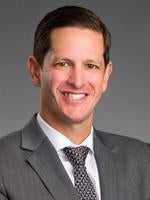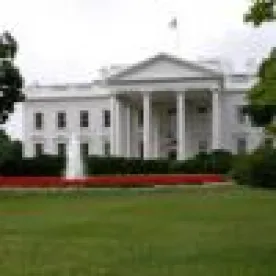Yesterday, the Treasury Department rolled out proposed Opportunity Zone (“OZ”) regulations (the “Proposed Regulations”) and President Trump noted the progress made by his Opportunity and Revitalization Council to eliminate barriers to OZ investments. The administration is clearly all in on maximizing the number of businesses and projects that will qualify for OZ benefits.
We will issue a detailed client alert discussing the Proposed Regulations, which span 169 pages, in the coming days. In the meantime, it’s particularly noteworthy that the Proposed Regulations clarified a number of areas for which taxpayers have been seeking guidance, including the following:
-
Substantially All Definition - the definition of “substantially all” as it is used throughout the OZ rules;
-
Capital Gain Exclusion and Multi-Asset QOFs - qualified opportunity funds (“QOFs”) will have more flexibility to include more than one investment in a QOF, and the capital gain exclusion upon disposition of QOFs held for at least 10-years may be available for certain QOFs, such as partnership QOFs, if the QOF disposes of assets;
-
Transfers - treatment of certain transfers of QOF interests;
-
Structuring Alternatives - structuring methods that may ease the logistics of managing and exiting from QOFs;
-
Leases - the treatment of leased property used by a qualified OZ business;
-
QOF Level Dispositions and Reinvestment - QOFs will have a one-year grace period to sell assets and reinvest the proceeds without triggering penalties;
-
The Working Capital Safe-Harbor - the working capital safe-harbor now applies to working capital designated for the development of a trade or business in the OZ;
-
Trade or Business Definition - the types of activities that constitute a trade or business of a qualified OZ business, which include certain leasing activities;
-
Gross Income Sourcing - the sourcing of gross income to the qualified OZ business in a taxpayer-friendly way, which confirms that qualified OZ businesses are not limited to those with customers primarily located within a OZ;
-
Period of Vacancy - buildings vacant for at least five years may satisfy the original-use test;
-
Leveraged Distributions - ordinary course leveraged distributions from partnership QOFs are generally permissible without causing an inclusion event, subject to partnership basis adjustment rules and a general anti-abuse rule; and
-
Original Use - original use commences when the person or prior person first places the property in service in the OZ for purposes of depreciation or amortization.
The president touted the merits of OZ in revitalizing distressed areas to a group of governors, state economic and budget directors, and other local officials. Among other comments, President Trump said, “In order to revitalize these areas, we’ve lowered the capital gains tax for long-term investments in Opportunity Zones all the way down to a very big, fat, beautiful number of zero — zero … [t]hat’s why they’re looking and they’re saying, ‘No, I don’t want to go there. Maybe I don’t love the location, I don’t want to go.’ Then they hear about the zero — they’ll say, ‘I think I’m going to go there.’ And then they start liking the location, right?”
The rollout of the Proposed Regulations was augmented by a progress report on the president’s December executive order (“EO”) establishing the White House Opportunity and Revitalization Council, which is aimed at cutting the red tape among federal agencies, as well as state and local governments, and could be a barrier to the take-up rate on OZ [see alert here]. The EO imposed a short-term timeline to identify potential bottlenecks as well as to identify potential solutions. The White House provided an update on this initiative headed up by HUD Secretary Ben Carson. The update includes a list of programs and action items already taken, as well as an operational plan to address other perceived barriers. The plan is broken down into work streams, or subcommittees, including economic development, entrepreneurship, safe neighborhoods, education and workforce, and measurement and analysis (i.e., social impact).
Given this significant display of support for OZ from the White House yesterday and the demonstration of progress on the EO, Republican congressional support for legislative proposals to enhance data reporting to measure social impact could increase and perhaps even expand the program to “disaster OZ” or adapting OZ to infrastructure investment. House Ways and Means Committee ranking member Kevin Brady, who shepherded the tax reform bill through the House last year, put out a strong statement of support for OZ following yesterday’s events.








 />i
/>i

